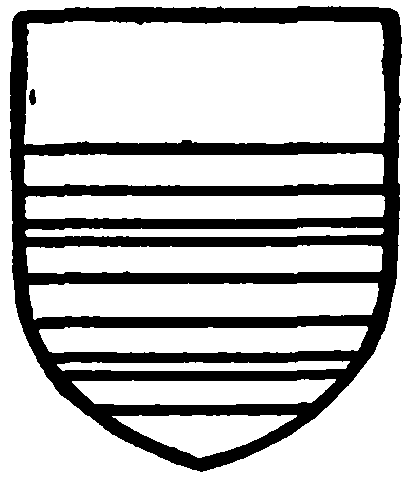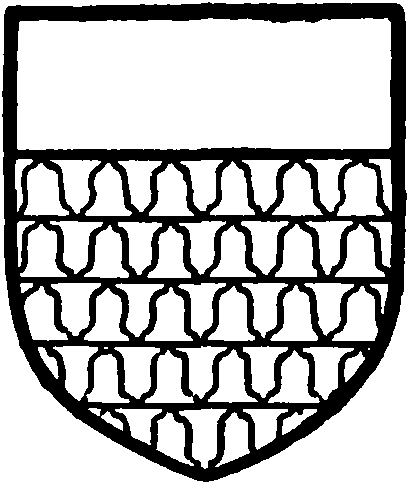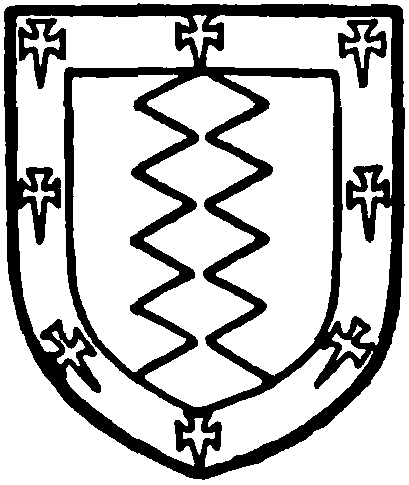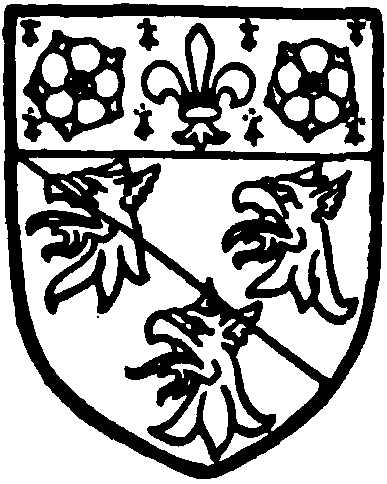A History of the County of Hampshire: Volume 4. Originally published by Victoria County History, London, 1911.
This free content was digitised by double rekeying. All rights reserved.
'Parishes: Winslade with Kempshott', in A History of the County of Hampshire: Volume 4, (London, 1911) pp. 179-181. British History Online https://www.british-history.ac.uk/vch/hants/vol4/pp179-181 [accessed 24 April 2024]
In this section
WINSLADE
Winesflot (xi cent.); Wineslode (xiii cent.); Wynesflode, Wynesolde, Swynesflode (xiv cent.); Wynsslod (xv cent.); Winsfolde, Wyndessled, Wyndslade (xvi cent.).
The parish of Winslade lies 3 miles south-east from Basingstoke and covers an area of 712 acres, (fn. 1) generally rising from north to south and reaching a height of 557 ft. above the ordnance datum in the south-east. The village is prettily situated in the south-western extremity of the parish at the foot of a wooded hill on the main road from Basingstoke to Alton.
Hackwood Park extends into this parish, which altogether contains 89 acres of woods and plantations. (fn. 2) Kempshott, covering an area of 555 acres, was formerly a separate parish with a church of its own, but was united to Winslade in 1393. (fn. 3) It continued to form part of Winslade until 1876, when under the provisions of the Divided Parishes Act (fn. 4) it was added to the parish of Dummer.
The soil is clay with a subsoil of chalk. The chief crops are wheat, oats, barley and turnips.
Manors
The manor of WINSLADE was held by Walter of Hugh de Port in 1086. (fn. 5) The overlordship continued with the descendants of Hugh de Port (fn. 6) for many centuries, the Marquess of Winchester being returned as the overlord as late as 1555. (fn. 7) In 1275 Winslade was held of John de St. John for half a knight's fee by Alan de Hagheman, (fn. 8) who purchased the manor of Eversley a year later. (fn. 9) In 1331 John de Knolle, who was the owner in 1316, (fn. 10) granted the reversion of the manor after his death to John de Tichborne. (fn. 11) The latter, apparently as lord of the manor, presented a rector during the episcopacy of Adam Orlton (1333–45). (fn. 12) Nevertheless Nicholas de Hagheman, a descendant of Alan de Hagheman, (fn. 13) was stated to be holding 1 hide of land in Winslade, formerly belonging to John de Knolle, in 1346, (fn. 14) while a rector was instituted at his presentation by William Edendon, Bishop of Winchester (fn. 15) (1346–66). However, Roger de Tichborne son of John de Tichborne was recognized as lord of the manor in 1349, (fn. 16) and from this date Winslade continued in the Tichborne family for over two centuries. John de Tichborne great-great-grandson of Roger (fn. 17) died seised of the manor in 1498, leaving as his heir his son William. (fn. 18) William died without issue soon afterwards, and Winslade then passed to his brother Nicholas, who was succeeded by his son of the same name. (fn. 19) The latter died in 1555 and was followed by his son Francis, (fn. 20) who as lord of Kempshott and Winslade was fined 4d. for non-attendance at the Basingstoke hundred court in 1560. (fn. 21) Two years later he sold Winslade to his overlord, William Marquess of Winchester, (fn. 22) with whose descendants it has continued ever since, (fn. 23) Lord Bolton being at the present day lord of the manor and the chief landowner in the parish.
The manor of KEMPSHOTT (Campessete, xi cent.; Campeshet, Kempeschete, xiii cent.; Kembeshete, xiv cent.; Kempshote, xv cent.), which had belonged to Aldret in the reign of Edward the Confessor, formed part of the possessions of Hugh de Port in 1086, being held of him by Walter. (fn. 24) The overlordship continued with the Ports and their successors (fn. 25) for a considerable period, Kempshott occurring in lists of the St. John knights' fees as late as 1349. (fn. 26) In 1498 the overlord was returned as Sir John Paulet, lord of Basing, (fn. 27) the descendant and one of the representatives of Isabel sister and eventually sole heir of Edmund de St. John, but later, viz. in 1555, Kempshott was said to be held of the heirs of Peter Coudray as of their manor of Herriard. (fn. 28) This latter statement can be explained by the fact that Kempshott like Herriard was held of the St. Johns by Reginald Fitz Peter in the middle of the 13th century, (fn. 29) and by Matthew Fitz Herbert in the reign of Edward III. (fn. 30)
In 1256 it was returned that Hugh de Sifrewast had withdrawn his suit from the hundred court of Basingstoke for his land of Kempshott, (fn. 31) and it is probable that at this time he was demesne lord of the manor, holding it from Reginald Fitz Peter for half a knight's fee. Kempshott seems to have continued with the Sifrewasts for a considerable time, ultimately passing early in the 14th century to the family of Tichborne by the marriage of Margaret daughter and heir of Roger de Sifrewast with John de Tichborne. (fn. 32) It formed part of the Hampshire possessions of the Tichbornes (q.v. supra) until 1578, when it was sold by Benjamin Tichborne, halfbrother and eventually heir of Francis Tichborne, (fn. 33) who alienated Kempshott to Henry Pincke, a Hampshire yeoman, who had been living in the parish as early as 1571. (fn. 34) He died in 1611 and the manor then passed in accordance with a settlement of 1590 to his widow Elizabeth for life with remainder to Robert his eldest son by her in fee-tail. (fn. 35) Robert Pincke, D.D., who became warden of New College, Oxford, in 1617, was greatly esteemed by James I for his skill in argument. Charles I owed him a debt of gratitude for his loyal conduct during the Civil War in raising the University Militia and exhorting the backward citizens of Oxford to take up arms for their sovereign. Falling into the hands of the Roundheads, for a short time he suffered imprisonment for his devotion to his sovereign, but on 5 January 1643 was ordered to be released on bail. He died on 2 November 1647 and was buried in New College Chapel between the pulpit and the screen. (fn. 36) He never resided at Kempshott, but allowed his younger brother Walter to occupy the house, (fn. 37) and by will left the manor to Walter's eldest son Henry Pincke of North Waltham (co. Hants). (fn. 38) Henry Pincke died in 1672 and was buried at Winslade. (fn. 39) He was succeeded by his son Thomas Pincke, Mayor of Winchester 1689–90, who died in 1708, leaving as his heir his son the Rev. Henry Pincke, vicar of South Damerham (fn. 40) (co. Wilts). The latter resided at South Damerham until his death in 1723, when the manor passed to his son Henry, who died unmarried in 1770. (fn. 41) By will Henry left the estate to his niece Dorothy wife of John Lee of Woolley Firs, White Waltham (co. Berks.), and only child of his sister Dorothy by Thomas Hasker of Bramley (co. Hants) and afterwards of Arborfield (co. Berks.). (fn. 42) Philip Dehany of Farleigh Wallop (co. Hants) purchased Kempshott from Mr. and Mrs. Lee soon afterwards, (fn. 43) and pulled down the old manor-house, building a large brick mansion in its stead. (fn. 44) In 1787 he sold the estate to James Morley, an East India merchant, (fn. 45) whose wife died there the same year and was buried in Winchester Cathedral. (fn. 46) The next year Mr. Morley parted with the manor, selling it to J. C. Crook, of Stratton, in whose tenancy the Prince Regent made use of Kempshott as a hunting-box and in 1795 kept his honeymoon there. (fn. 47) In 1832 Edward Walter Blunt purchased the estate and quite transformed the appearance of the house by alterations of an Italian character. From Mr. Blunt Kempshott was purchased by the late Sir Nelson Rycroft, bart., (fn. 48) and is now the property of his son Sir Richard Nelson Rycroft, bart. It is at present occupied by Mr. Henry Gourlay, J.P.

Sifrewast. Azure two gimel bars and a chief or.

Tickborne. Vair a chief or.

Pincke. Argent a pale indented gules and a border azure with eight crosses formy fitchy or thereon.

Rycroft, baronet. Party bendwise or and gules three griffons' heads razed and counter coloured and a chief ermine with a fleur de lis between two roses gules.
Church
The church of ST. MARY THE VIRGIN is a plain rectangular building, the chancel and nave combined measuring 45 ft. by 19 ft. 8 in. At the west end is a small tower with a vestry on the north side and a porch on the south.
Though the site is old, the church in its present form dates from 1816, and is a plain and rather unattractive building with a low-pitched slated roof, plastered walls and a gabled yellow brick tower.
All the windows have wooden frames, the east one having three cinquefoiled lights with perpendicular tracery. The north and south windows have two plain lights each under square heads. Above the doorway from the tower to the nave is an old window arch, partly blocked, through which the west window of the tower is seen.
On the north side of the east window is a rudely carved white marble wall tablet to William Pincke, 1694, second son of Henry Pincke of Kempshott. There are other gravestones of the Pincke family.
In the east window are a few fragments of mediaeval glass and six small white and gold quarries of Flemish glass, with the Crucifixion, the serpent in the wilderness, St. John Baptist (dated 1520), the meeting of Mary and Elizabeth, Susanna and the elders, and the healing of Lazarus.
Above this window is an almost obliterated wall painting of the Coronation of our Lady in an oval waved border. It formed perhaps the central part of a Doom. Near the pulpit is part of a 17th-century altar rail, and over the chancel step a pretty piece of early 18th-century scrolled wrought ironwork, gilt over. The font is modern with a small octagonal panelled bowl. The tower contains one bell by S K (Samuel Knight), 1695.
The church possesses a silver chalice, paten and alms dish, the chalice being engraved with the arms of the Bolton family, the paten and alms dish with the inscription 'The gift of the Right Honble. Lord Bolton to the Parish Church of Winslade 1815.'
The first book of registers contains entries of baptisms 1723 to 1812, marriages 1723 to 1754, burials from the same date to 1810. The second book contains marriages from 1755 to 1807, and the third continues them up to 1812. There is also a church rate book from 1775.
Advowsons
Winslade and Kempshott were distinct parishes—each with a parish church of its own (fn. 49) —until 1393, in which year the patron of the two churches, John de Tichborne, directed a petition to the Bishop of Winchester praying that by reason of their poverty the parishes might be united. (fn. 50) Neither of the parish churches was of itself sufficient, he said, for the support of one rector or curate, the church of Kempshott was utterly destroyed, and under these circumstances he petitioned that the church of Winslade, which was large enough for the parishioners of both churches, might be maintained in future with the rights of both churches and that the patronage might continue in the hands of him and his successors. (fn. 51) The official of the bishopric held an inquiry attended by rectors of neighbouring churches and made the following return:—that the annual value of Winslade was six marks and of Kempshott one mark, that the patron of both churches was John de Tichborne, that the distance between the two churches was only 1½ miles, that there was no river between the parishes, and that only three parishioners resided at Winslade and none at Kempshott. The bishop accordingly decreed the union of the churches on 26 August 1393. (fn. 52) The advowson has continued with the lords of the manor, (fn. 53) the living at the present time being a rectory of the net yearly value of £133 with 12 acres of glebe and residence in the gift of Lord Bolton. Joseph Warton the critic, the elder brother of Thomas Warton the historian of English poetry, was instituted rector here in 1748. (fn. 54) Another distinguished rector was John Wooll, afterwards head master of Rugby School—from 1807 to 1828—who was instituted in 1796, but soon afterwards exchanged the living for the rectory of Blackford (co. Somers. (fn. 55) ).
Charities
This parish participates in the Duke of Bolton's charity, founded by will of 9 April 1694 (see Basingstoke Municipal Charities). The sum of £7 9s. annually is distributed about Christmas in clothing to the poor.
